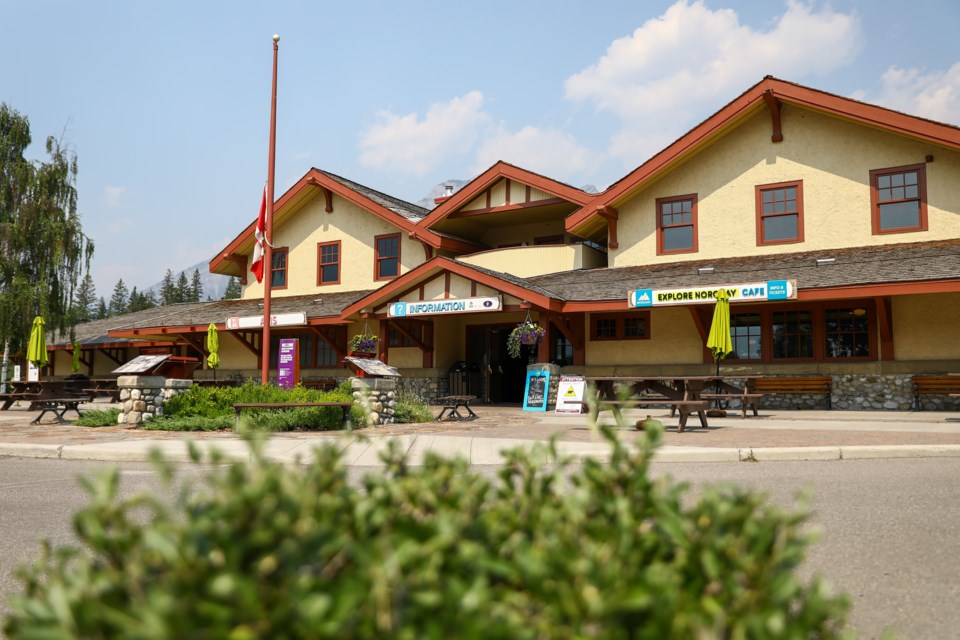BANFF – The mayors of Banff and Canmore are lobbying Prime Minister Mark Carney to fast-track passenger rail from Calgary to Banff as a nation-building project.
In a letter to Carney and Alberta Premier Danielle Smith, the two local mayors, Banff’s Corrie DiManno and Canmore’s Sean Krausert, along with Calgary Mayor Jyoti Gondek and Cochrane Mayor Jeff Genung urged both governments to recognize a passenger train as a "project of national interest" under Bill C-5 – sweeping legislation to speed up major projects aiming to boost the economy in the face of the trade war with the United States.
“This project holds national, provincial, and local significance and presents an opportunity to deliver sustainable growth, tourism expansion, climate leadership, and reconciliation through transportation,” the four mayors wrote in the July 22 letter as part of the Bow Valley Corridor Alliance.
Federal transport minister Chrystia Freeland travelled to Banff at the end of June to meet with Banff Town Manager Kelly Gibson and Adam Waterous – whose company Liricon is behind the push for passenger rail from Calgary to Banff – at her request to learn more details about the Calgary-Banff train.
Liricon Capital, the personal holding company of Jan and Adam Waterous and owners of Mount Norquay ski resort, holds the lease for about 17 hectares of Canadian Pacific-Kansas City (CPKC) railway lands on the north and south sides of the tracks in Banff.
The couple’s overarching vision is to turn the train station lands into a multi-modal transit hub and tourist arrival centre, which would include the return of passenger rail from Calgary and include intercept parking lots on both sides of the tracks.
The Waterous’ have been working with their development partner, Plenary, for the return of passenger rail to Banff. VIA Rail’s last passenger train trip through Banff on its way to Vancouver was in January, 1990.
Jan said the Calgary-Banff passenger rail project can meet the two-year approval window specified by Bill C-5 and be “ready to break ground immediately thereafter.”
“It is now up to the province to formally put forth to Ottawa the Calgary-Banff train as a national interest project,” she said.
“Without the province’s support, it cannot be included for consideration.”
Alberta’s passenger rail master plan and 15-year delivery plan are expected to be completed by the end of this summer, with a goal to inform the provincial government decisions in fall for the 2026 budget and future provincial budgets.
In a recently released evaluation of 30-year and 60-year plans, the return of passenger rail between Banff and Calgary rated high. Both conventional and high speed rail were evaluated, though high-speed rail is the “emerging preferred option” for regional rail services between Calgary and Banff.
The four mayors in the Bow Valley Corridor Alliance and the Waterous’, however, are pushing for conventional rail, leveraging the existing CPKC railway line.
They say this model could be delivered faster, offers inclusive regional service, and affordability with vital stops in downtown Calgary, West Calgary, Cochrane and Mînî Thnî – which would also improve access to nearby Kananaskis Country – before arriving in Canmore and Banff.
“A conventional passenger rail service maximizes flexibility for visitors, provides commuter mobility options to take many thousands of vehicle trips off the increasingly congested Trans-Canada Highway, and increases workforce availability in our communities by allowing employers to tap into broader labour markets,” the mayors wrote.
While high-speed rail has been suggested in some circles as part of the province’s railway master plan, the mayors told Carney and Smith that this would “undoubtedly be detrimental to the region as a whole.”
“High-speed rail would adversely affect local economies between Calgary and Banff and provide no potential benefit whatsoever to the Stoney Nakoda First Nations,” the letter stated.
“Further, high-speed rail does not have any of the advantages of conventional passenger rail with respect to employment mobility and supporting local employers.”
Jan agreed, noting traditional rail would be “superior” to high-speed for the Bow Valley.
“The Liricon-Plenary passenger rail system supports the economies of all the municipalities along the train route and supports labor mobility and housing,” she said.
“The fact that it also has outstanding green credentials as a zero emission hydrogen-powered train system helps to balance the province’s other ambitions to expand its energy business.”
While Parks Canada has been largely silent on the passenger train proposal, the 2022 management plan for Banff National Park raises challenges around wildlife mortality on the existing CPKC tracks, and that a second line for passenger trains would only make that worse.




